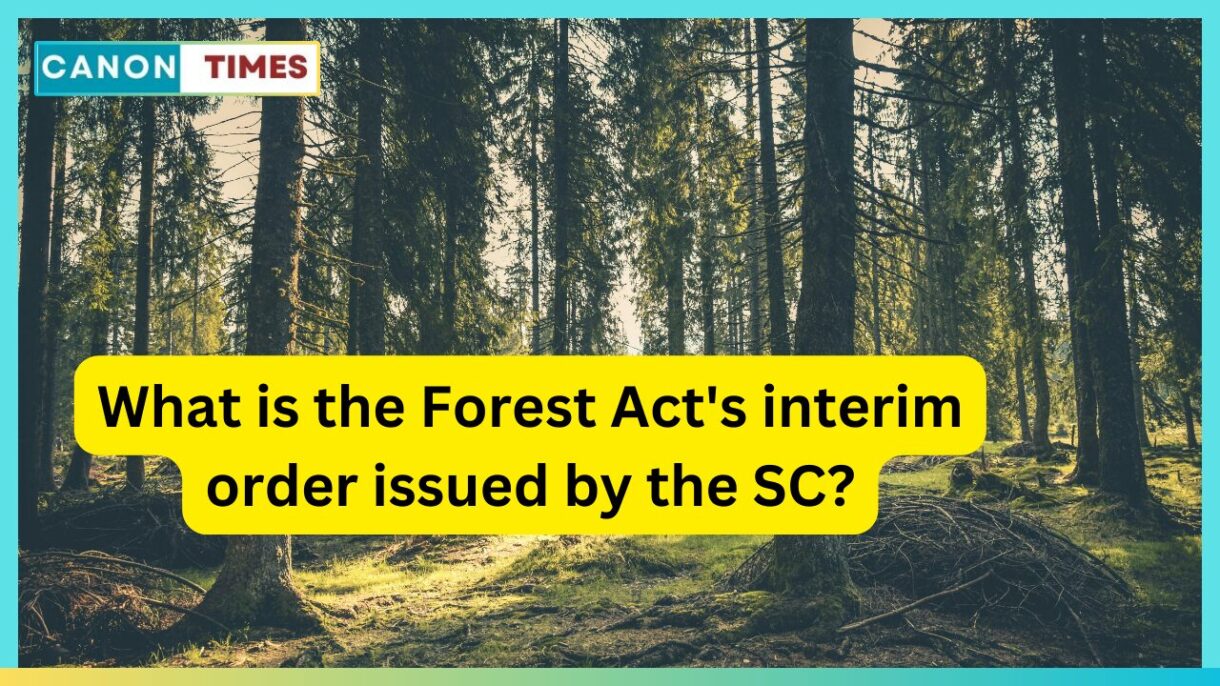In what ways do the Act’s forests provision? Which modifications was the Union government proposing?
The Supreme Court ruled on Monday that the government must stick to the broad definition of “forest” as established by a 1996 ruling in the T.N. Godavarman Thurumulpad case. This order will remain in effect until a final decision is rendered on a petition contesting the amended Forest Conservation Act of 2023. The government has also been ordered by the court to release a consolidated list of all land that States and Union Territories have designated as forests by the end of April.

The Forest Conservation Act: What is it?
The goal of the Forest Conservation Act, which went into effect in 1980, was to prevent forest destruction. According to figures provided by the Centre to a parliamentary panel to show the effectiveness of the legislation, an estimated four million hectares of forest land had been diverted between 1951 and 1975. Once the Act went into effect, the average annual rate of diversion dropped to about 22,000 hectares, or about a tenth, of that amount.
Nonetheless, the majority of the forest area covered by this law was classified as such by the Indian Forest Act, or by State records dating back to 1980. The landmark Godavarman Thirumulpad judgement was handed down by the Supreme Court in 1996 as a result of illegal timber-felling in Gudalur in Tamil Nadu. It stipulated that all woods, regardless of their ownership or classification, were to be preserved. This introduced the idea of “deemed forests,” or areas that resembled forests but were not officially classified as such in government or revenue records. Over the course of the 28 years after the ruling, states have construed “forests” differently depending on studies and surveys by expert committees. This makes sense considering the great diversity of India’s forests and native vegetation. For example, a forest is defined in Chhattisgarh and Madhya Pradesh has an area of at least 10 hectares that is covered in naturally occurring timber, fuel wood, and producing trees, and that has a tree density of 200 or more per hectare. In Goa, an area of land is considered a forest if at least 75% of its surface is covered in forest plants. Some States don’t even have any restrictions. Estimates of the territorial distribution of considered forests in India vary from 1% to 28% of the country’s 80 million hectares of official forest land due to differing definitions of the term.
In an apparent attempt to provide “clarity,” the Centre recently attempted to alter the Forest Conservation Act. This was because substantial portions of legally registered forest property had previously been lawfully converted to non-forestry uses, yet they nevertheless met the requirements of a State to be considered “deemed forests.” This created difficulties for the ownership and usage of such land. Due to this uncertainty, individual residents were also reluctant to grow their own plantations and orchards, even though they had significant ecological benefits, for fear that they would be classified as “forest” and their ownership would be nullified. Forest regulations needed to be “dynamic” in order to accomplish India’s net-zero targets, which include creating a 2.5–3 billion tonne carbon sink. The rules also aimed to exclude “deemed forest,” which is not yet registered as such, from the protection regime.
What matters were addressed by the amendments?
The modifications also extend protection beyond 0.10 hectares of forest area that is next to a road or rail line and is required to allow access to a habitation. Forest area that required to be removed in order to build strategically significant linear projects would likewise be excluded from the Act if it was located within 100 kilometres of international boundaries, the Line of Control, or the Line of Actual Control. Five hectares of forest land affected by “left wing extremism” or any ten hectares in a forest thought to be required for the construction of infrastructure connected to security would also be safe.
In order to provide basic infrastructure in tribal communities, the government argues that certain exemptions are required. Further, the Centre contended, generating jobs through ecotourism, zoos, and safaris is necessary for the appropriate preservation and management of forests by nearby populations. However, detractors have cited the Forest Rights Act of 2006 as another Act that contains similar enabling language.
What significance does the SC order have?
The Supreme Court’s interim ruling suggests that forest management will carry on as if the Center’s most recent revisions never happened.
Above all, it stipulated that the Centre would provide reports prepared by expert committees established by the States about the area of deemed forests on their soil.
Additionally, it invalidated plans to establish safari parks and zoos on forest territory.
Abhishek Verma
Author: This news is edited by: Abhishek Verma, (Editor, CANON TIMES)
Authentic news.






